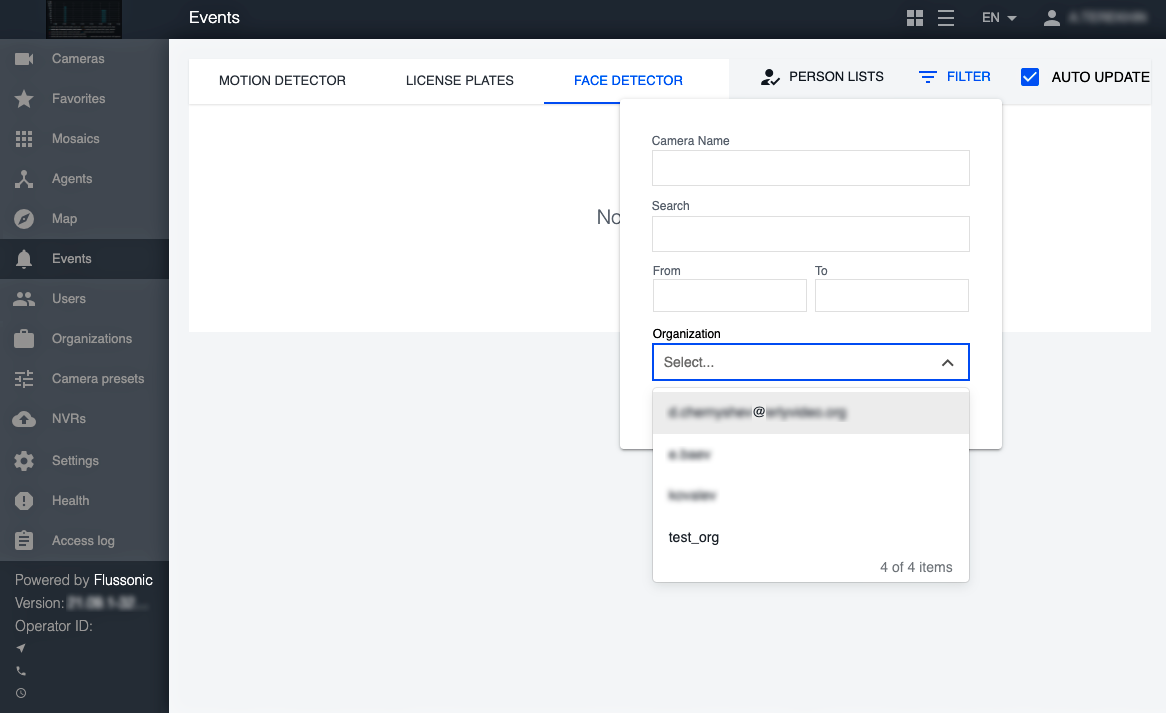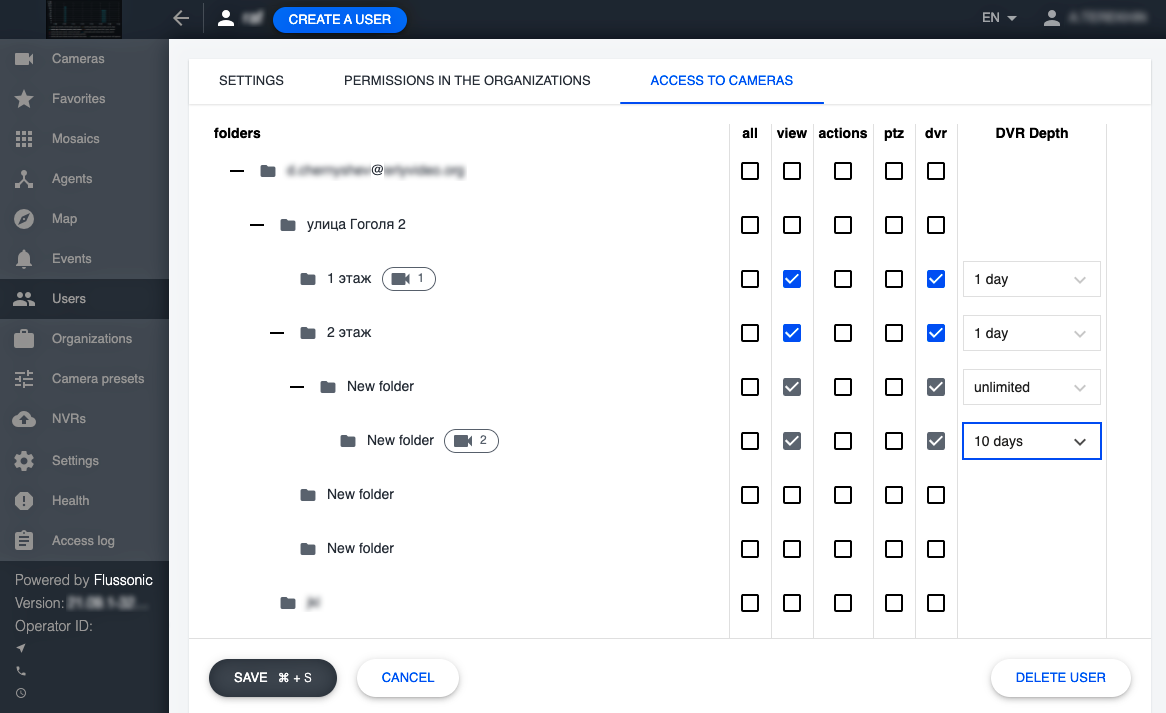21.11
- In this new version we focused on stabilizing and improving video analytics:
- We fixed an issue where video analytics did not work for cameras with sub-stream activated.
- We added [auto update mode].
- To enable [facial recognition] has permissions to create and edit this list.
- [Motion detection]. This is convenient when, for example, one operator manages multiple organizations and data needs to be collected for each organization.

- A camera can be installed in public places and shared among multiple subscribers. For example, in the case of video surveillance for an apartment building. From now on, you can store a single DVR for that camera, but [assign] a different archive depth access depending on the service the subscriber chooses.

- It is now possible to remotely update the camera firmware via Watcher. Therefore, physical access to the camera is not necessary.
What’s new in Flussonic ver. 21.11
-
One of the biggest recent changes to Flussonic is the implementation of the API v3. We have provided a set of standard and convenient tools for integration with various platforms. The Flussonic HTTP API is documented, described, and will be further developed. Please switch to this API from your current methods because all other HTTP methods outside of /Flussonic/ap/v3 will soon be deprecated and removed.
-
Admin UI moved to API v3 (added VOD, transponders, auth backends, encoder management, template display and management, and others). This now makes the admin user interface work faster.
-
With the publication prefix, you can simultaneously specify the settings for many streams with previously unknown names. There was a “live” directive for this. In 21.11 we moved the live location functionality to a template to make the settings more consistent. The “live” directive will automatically become a template the first time the settings are saved. (In the near future, the “live” directive will reach the end of its useful life). If you used to generate the configuration automatically using scripts, we recommend that you automate it through the Flussonic HTTP API.
-
We have implemented a new mechanism to insert ads by partially substituting segments within the streaming session. Within a single segment, groups of pictures (GOPs) from the stream can be replaced just in time with the GOPs from the commercial. Therefore, a segment can contain multiple broadcast GOPs and multiple announcement GOPs.
-
For a stable [MPTS] passing, we fixed the behavior when reconfiguring the transponder was impossible without rebooting.
-
After selecting the stream resolution in the [WebRTC] player before publishing, the video had a default value of 640x360. This behavior is fixed, now the stream is published with the specified resolution.